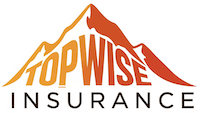2025 How to Find the Best Car Insurance Near You
Published on July 28, 2025

Michael Reyes
Auto Insurance Specialist
Michael Reyes is an auto insurance specialist with 8+ years in claims and agent roles; expert in premiums, telematics, and young-driver discounts.
How to Find the Best Car Insurance Near You
When it comes to protecting your car, your budget, and your peace of mind, finding the right car insurance is critical. But with so many companies offering various policies, it’s easy to get overwhelmed. In this guide, you’ll learn exactly how to find the best car insurance near you, step-by-step. From evaluating your needs to spotting red flags and comparing policies, we’ve covered everything to help you make the smartest, most affordable choice.
Understanding Your Car Insurance Needs
Assessing Your Vehicle and Driving Habits
Before diving into quotes and coverage types, take a good look at your driving life. Is your car brand new or a few years old? Do you commute daily or just drive on weekends? These details influence your coverage needs.
- Daily commuters may need comprehensive and collision coverage.
- Older vehicles might only need liability coverage to stay legal.
- Teen drivers or shared family cars require careful consideration on coverage limits.
State Minimum Requirements
Each state in the U.S. has its own minimum legal requirement for car insurance. These usually include bodily injury liability and property damage liability. For example:

Always check with your state’s insurance department to ensure compliance.
Personal vs Commercial Insurance
If you use your vehicle for business—such as rideshare, deliveries, or transporting clients—regular car insurance may not cover you. You’ll need commercial car insurance, which typically includes higher liability limits.
Types of Car Insurance Coverage
Liability Coverage
This is legally required in most states and covers damage or injuries you cause to others. It doesn’t protect your car or medical bills.
Collision Coverage
Pays to repair or replace your car after an accident, regardless of fault. It’s especially valuable for newer or financed vehicles.
Comprehensive Coverage
Protects you against non-collision incidents like theft, fire, vandalism, or natural disasters.
Uninsured/Underinsured Motorist Protection
If you're hit by a driver with no or too little insurance, this kicks in to cover your medical and repair bills.
Why Local Car Insurance Matters
Personalized Customer Service
Local agents often provide a more hands-on experience. They know your community and are easier to reach when you need support.
Better Understanding of Local Laws
Local insurers stay updated with state-specific changes and compliance requirements.
Faster Claims Processing
Because of their proximity, regional providers can often resolve claims more quickly and personally than large national chains.
How to Research Local Insurance Providers
Start with Online Search Engines
Type in “best car insurance near me” or “top auto insurers in [your city]” and review the local listings and map suggestions.
Use Review Platforms (Yelp, BBB)
Sites like Yelp and the Better Business Bureau let you see real customer feedback and how companies handle complaints.
Check State Insurance Department Ratings
Most state departments offer consumer complaint ratios, complaint indexes, and other transparency tools.
Comparing Quotes Like a Pro
Use Aggregator Websites
Sites like NerdWallet, The Zebra, or Compare.com allow you to input your info once and compare offers from multiple providers instantly.
Request Direct Quotes from Agents
For the most accurate and personalized quote, speak directly with an agent who understands your needs.
Analyze Deductibles vs Premiums
A higher deductible usually means a lower premium. But make sure you can afford that deductible in case of a claim.
Evaluating the Reputation of Insurance Companies
Reading Customer Reviews
Look for consistent themes—are customers happy with claims service? Are agents helpful or pushy?
Checking Financial Strength (AM Best, Moody’s)
You want an insurer with the financial stability to pay out large claims. Look for “A” ratings or higher.
Claims Satisfaction Scores
J.D. Power releases annual satisfaction scores that are invaluable when comparing providers.
Red Flags to Watch Out For
Too-Good-To-Be-True Premiums
If a quote seems way lower than others, it may come with terrible coverage or hidden fees.
Lack of Transparency
If a provider can’t clearly explain coverage or avoids your questions, steer clear.
Poor Communication Practices
Slow responses, unclear emails, or hard-to-reach agents are all red flags.
Discounts and Bundling Options
Multi-Policy Discounts
Combining auto with home or renters insurance can save you up to 25%.
Good Driver Incentives
Safe driving habits can earn you steep discounts. Some providers even offer telematics-based savings.
Loyalty and Safety Features Discounts
Loyal customers and those with anti-theft devices, airbags, or driver-assist tech can also qualify for extra savings.
The Role of Insurance Agents vs Brokers
Independent Agents vs Captive Agents
- Captive agents represent only one insurer (e.g., State Farm).
- Independent agents can offer multiple quotes from various companies.
Pros and Cons of Using a Broker
Brokers are licensed to help you find the best policy, but they may charge a fee or earn commission.
When to Work Directly with Insurers
If you’re confident in what you need, going direct can cut out the middleman and save time.
How to Read and Understand a Policy
Definitions to Know
Understand terms like deductible, liability, premium, and comprehensive to avoid surprises.
Common Exclusions
Most policies exclude intentional damage, racing, or using your car as a taxi without special coverage.
The Importance of Fine Print
Always read the full policy document before signing—it includes crucial details about limits and responsibilities.
What to Do After Choosing a Policy
Review Before Signing
Double-check the coverages, limits, and personal details on the quote before finalizing.
Ask for a Physical Copy
Even if you go digital, a printed version can be handy during emergencies.
Set Up Auto-Pay or Reminders
Avoid lapses by automating payments or setting calendar alerts.
How to Switch Insurance Providers Smoothly
Timing Your Switch
Plan your new policy to begin on the same day your old one ends.
Avoiding Lapses in Coverage
Even a one-day gap can cause issues with law enforcement or future insurers.
Canceling Old Policy the Right Way
Call or write your insurer to confirm cancellation, and keep documentation for your records.
Tips for Lowering Your Premiums Over Time
Safe Driving Habits
The fewer incidents on your record, the lower your rates.
Taking Defensive Driving Courses
Many insurers offer discounts for completing approved courses.
Reassessing Your Policy Annually
Your needs change. Re-shop every 12 months to stay competitive.
Online Tools and Mobile Apps for Car Insurance
Best Apps for Comparison
Apps like Gabi, Jerry, and Policygenius can help you compare quotes on-the-go.
Managing Policies Digitally
Most insurers offer mobile apps to pay bills, manage coverage, and track claims.
Filing Claims via App
Uploading accident photos, police reports, and tracking adjusters can all be done via mobile.
Frequently Asked Questions
1. What factors impact my insurance premium?
Your age, driving history, location, credit score, vehicle type, and annual mileage all play a role.
2. Can I switch providers mid-policy?
Yes, most insurers allow it without penalty, though you should check for cancellation fees.
3. What is the best time to buy car insurance?
The best time is before your current policy expires or after any major life or driving status change.
4. How much coverage do I actually need?
You should meet your state's minimum and consider higher limits for better protection, especially if you have assets.
5. Do insurance companies check my credit?
In most states, yes. A good credit score can reduce your premium.
6. How do I cancel a policy safely?
Submit a written cancellation notice and get a confirmation letter. Avoid canceling before your new policy starts.
Conclusion: Make a Smart, Local Choice
Finding the best car insurance near you isn’t about chasing the lowest price—it’s about getting real protection that fits your needs. When you understand your coverage options, use comparison tools, and know what to look out for, you’ll find a provider that delivers peace of mind and lasting value.
You Might Also Like
Compare Car Insurance: A Step‑by‑Step Guide to Finding the Right Policy (Expert 2025 Update)
Jul 29, 2025Maximize Your Savings: 17 Car Insurance Discounts and How to Qualify in 2025
Jul 28, 20252025 Car Insurance Guide for Young Drivers: Actionable Tips to Lower Your Rates
Jul 28, 20252025 SR‑22 Car Insurance Explained: Requirements, Costs, and Expert Tips
Jul 28, 2025Understanding Non‑Owner Car Insurance in the US: An Ultimate Guide
Jul 28, 2025
